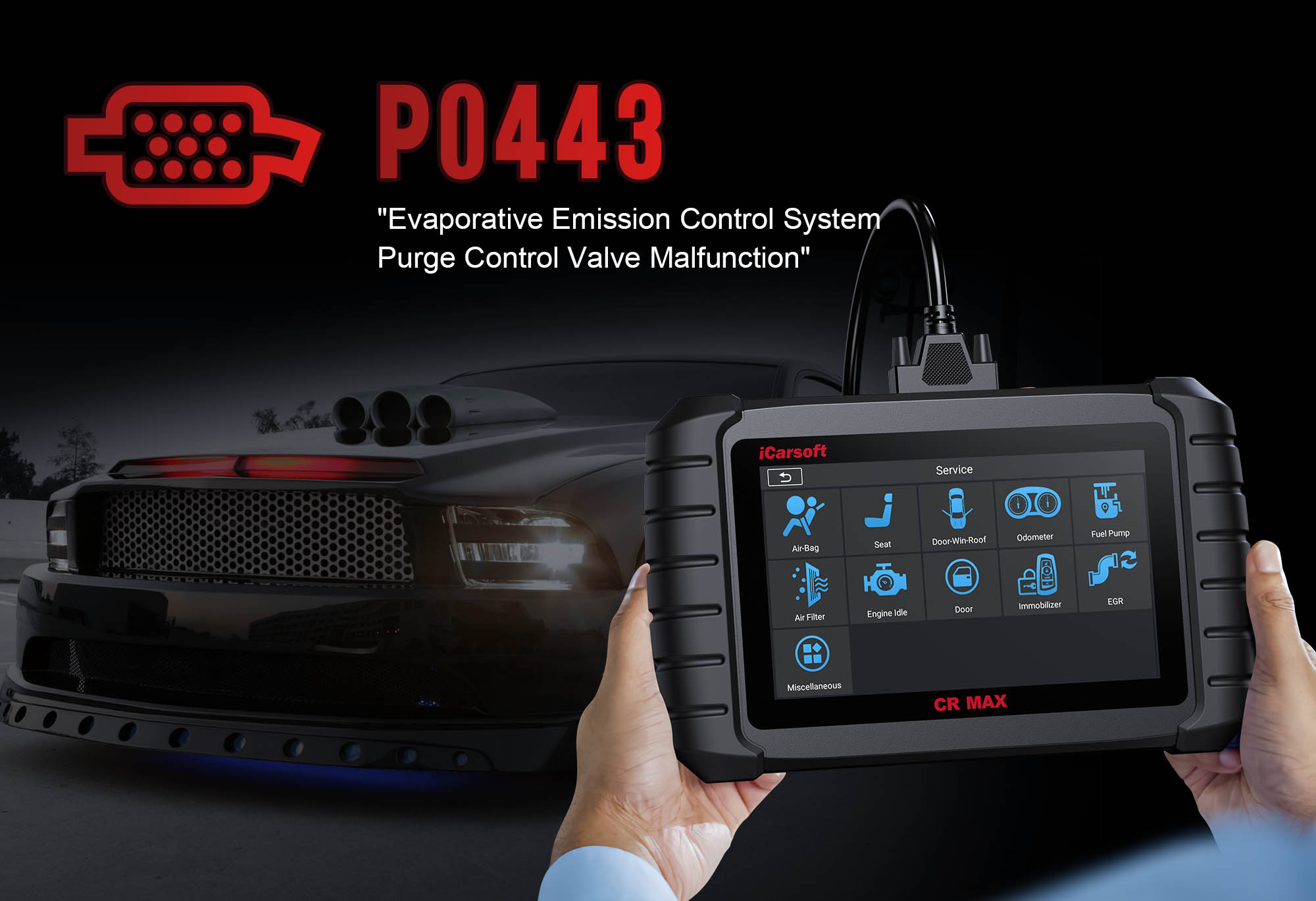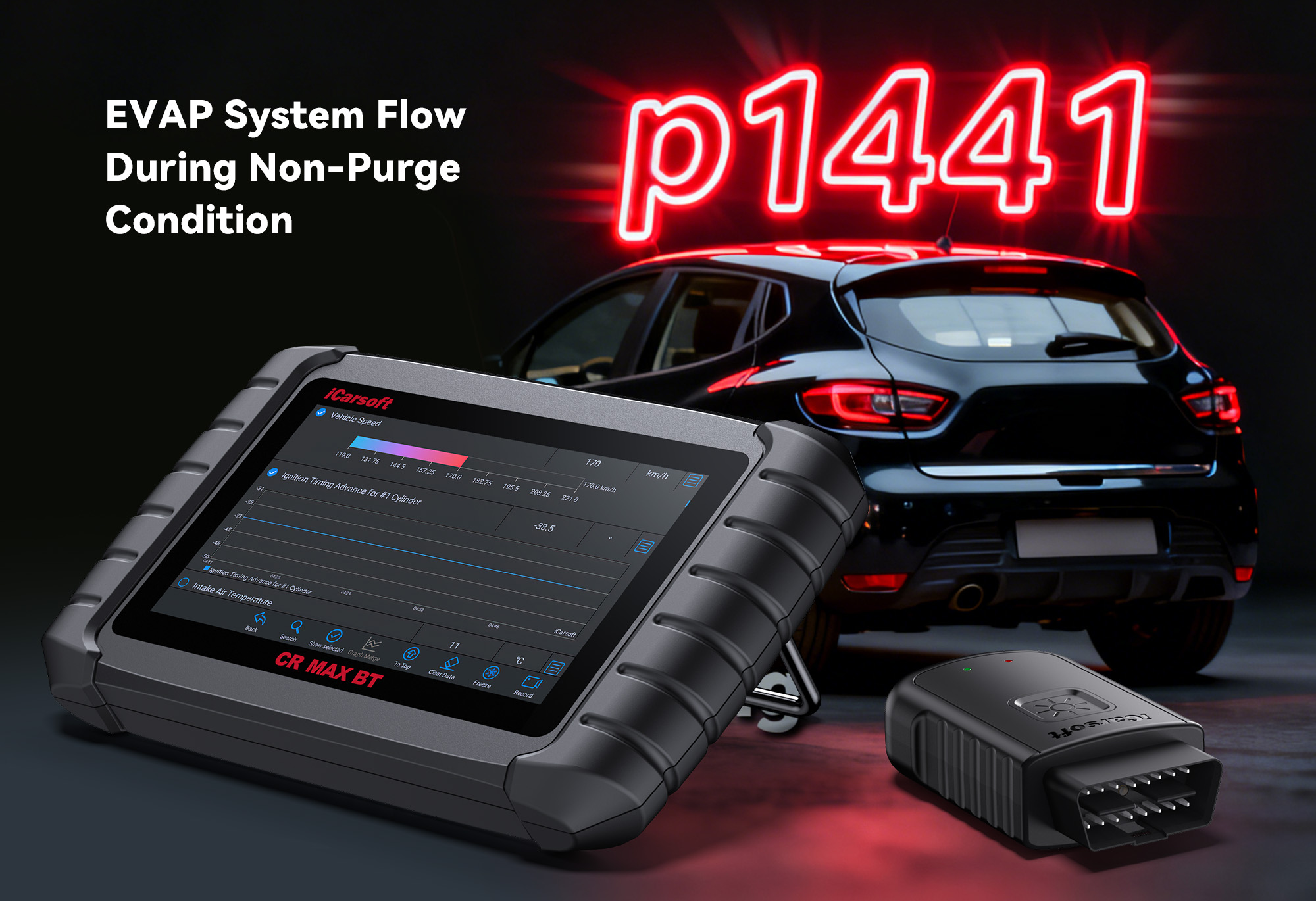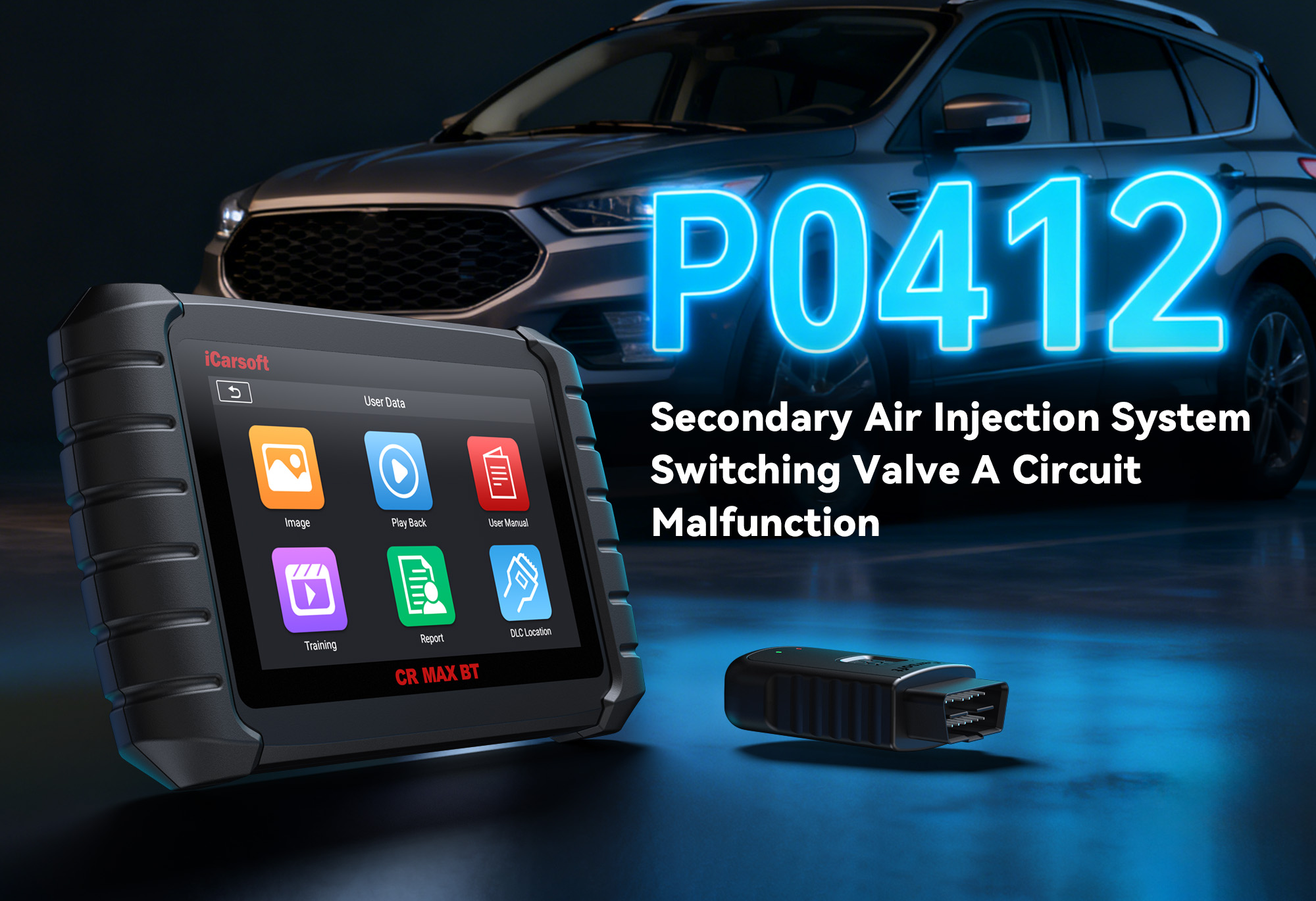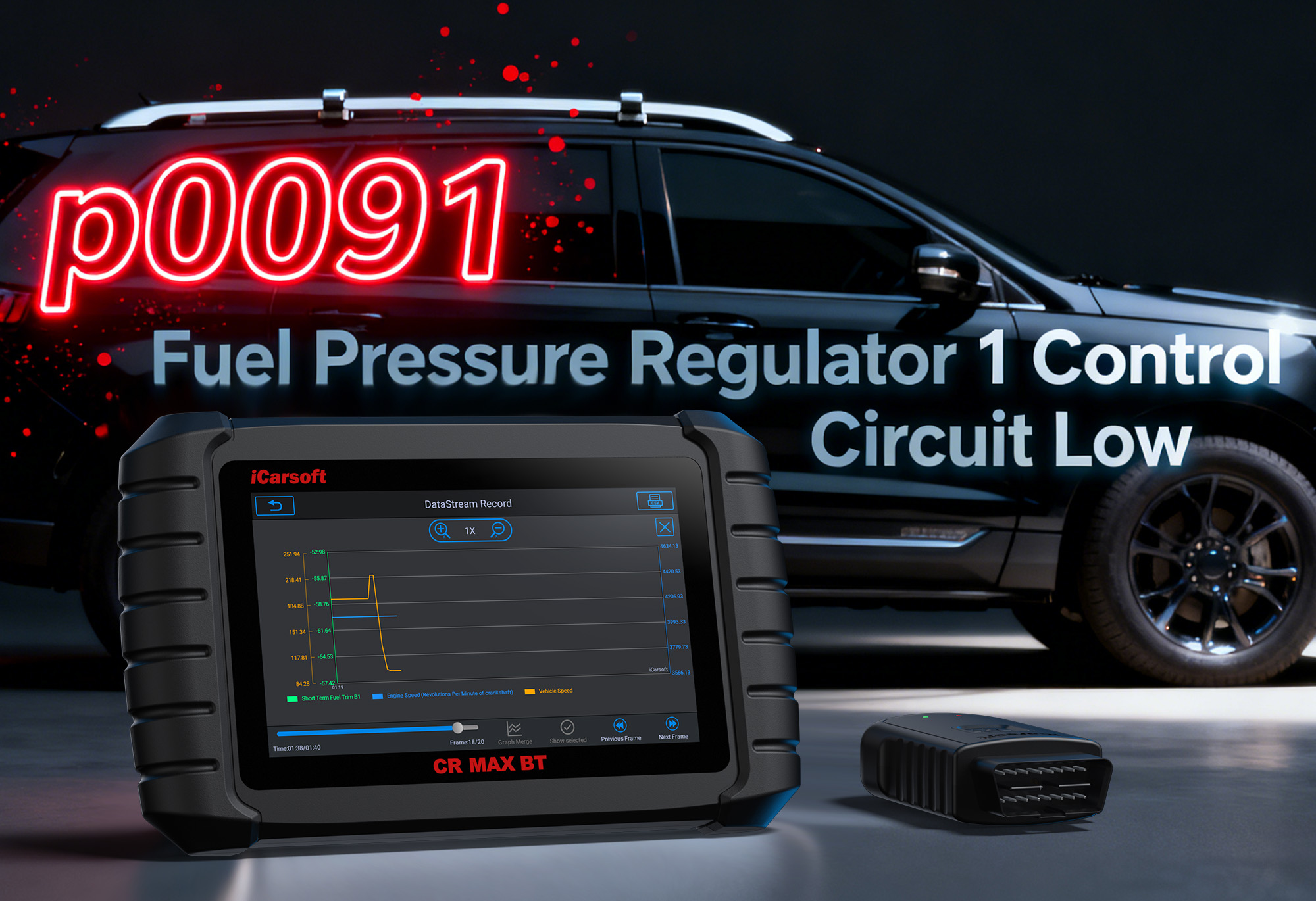Demystifying the P0443 Error Code: Causes, Symptoms, and Solutions
If your check engine light illuminates and a scan reveals the P0443 code, you’re facing a fault in your vehicle’s Evaporative Emission Control (EVAP) system—specifically the purge control valve circuit. The EVAP system is critical for reducing fuel vapor emissions, and a P0443 fault can lead to poor fuel economy, fuel odors, and even emissions test failures. In this guide, we’ll break down what P0443 means, its common causes and symptoms, and how the iCarsoft CR MAX diagnostic tool simplifies accurate diagnosis and repairs.
What is the P0443 Error Code?
The P0443 error code is an OBD-II trouble code that targets the EVAP system’s purge control valve circuit. To understand its significance, let’s first recap the EVAP system’s role:
-
The EVAP system captures fuel vapors from the fuel tank (which would otherwise escape into the atmosphere) and stores them in a charcoal canister.
-
The purge control valve—a solenoid-controlled valve—regulates when these stored vapors are "purged" into the engine’s intake manifold. During normal operation, the ECM (Engine Control Module) opens the valve at specific times (e.g., when the engine is warm) to burn the vapors as fuel, improving efficiency and reducing emissions.
P0443 triggers when the ECM detects a malfunction in the purge control valve’s electrical circuit. This includes issues like "open circuits" (no current flow), "short circuits" (excess current flow), or unresponsive valve operation. When the ECM can’t control the valve properly, it illuminates the check engine light to alert you to the fault.
Common Causes of the P0443 Error Code
P0443 stems from issues that disrupt the purge control valve’s electrical function or physical operation. Below are the most frequent culprits, ordered by likelihood:
Faulty Purge Control Valve
The top cause—over time, the valve’s solenoid fails (internal short/open) or the valve becomes clogged with dirt/carbon deposits, preventing it from opening/closing.
Wiring/Connector Issues
Loose, corroded, or frayed wires between the valve and ECM disrupt electrical signals. Damaged connectors (bent pins, oxidation) also cause circuit faults.
Vacuum Leaks in the EVAP System
Leaks in hoses, gaskets, or the charcoal canister disrupt system pressure, causing the ECM to misinterpret valve operation as a circuit fault.
ECM Malfunction (Rare)
Software glitches or hardware failures in the ECM prevent it from sending/receiving signals to the valve—fixed with manufacturer software updates or ECM replacement.
Symptoms of the P0443 Error Code
P0443 symptoms range from subtle to obvious, but ignoring them can lead to worse issues (e.g., failed emissions tests). Watch for these signs:
Illuminated Check Engine Light
The most consistent symptom— the light stays on until the code is cleared and the fault is fixed.
Poor Fuel Economy
A stuck-closed valve traps fuel vapors (wasting fuel), while a stuck-open valve floods the engine with excess vapors—both reduce MPG by 5–10%.
Rough Idle or Misfires
Excess fuel vapors (from a stuck-open valve) disrupt the air-fuel mixture, causing idle fluctuations (500–900 RPM) or engine misfires at low speeds.
Difficulty Starting the Engine
A stuck-open valve can flood the intake with fuel vapors, making it hard to start—you may experience extended cranking or no start at all.
Excessive Fuel Odor
A faulty valve or EVAP leak allows fuel vapors to escape—you’ll smell gasoline around the vehicle (especially near the fuel tank or engine bay).
How to Diagnose & Fix the P0443 Error Code (with iCarsoft CR MAX)
Diagnosing P0443 requires distinguishing between electrical faults (wiring/ECM) and physical faults (valve clogs/leaks). The iCarsoft CR MAX streamlines this process with EVAP-specific tools—no guesswork needed.
Step 1: Retrieve the Code & Analyze Freeze-Frame Data
Start by confirming P0443 and gathering context about when the fault occurs:
-
Plug the CR MAX into your vehicle’s OBD-II port, power it on, and select your make/model/year (use AutoVIN Recognition to skip manual entry—critical for EVAP system specs).
-
Navigate to Engine Control Module > Fault Codes > Read Codes to confirm P0443. Check for related codes (e.g., P0442 for "EVAP small leak," P0446 for "EVAP vent valve fault")—these narrow down the issue.
-
Tap Freeze-Frame Data to view conditions when the code triggered (e.g., "Idle, 70°F engine temp, 20 minutes after start"). This reveals patterns (e.g., fault only occurs when the engine is warm).
Step 2: Inspect the Purge Control Valve (Physical & Electrical Tests)
The purge control valve is the most likely culprit—use the CR MAX to test its health:
-
Locate the Valve: Use the CR MAX’s Component Location guide (varies by vehicle—typically near the intake manifold or charcoal canister).
-
Physical Inspection: Check for cracks, oil residue (sign of leaks), or loose hoses. If the valve is clogged with carbon, clean it with throttle body cleaner (avoid harsh chemicals that damage the solenoid).
-
Electrical Resistance Test (with CR MAX Multimeter):
-
Disconnect the valve’s electrical connector.
-
Set the CR MAX to Multimeter > Resistance Test.
-
Connect probes to the valve’s two pins—normal resistance ranges from 10–30 ohms (check the CR MAX’s Sensor Specs tab for your vehicle’s exact value).
-
Results:
-
0 ohms = Short circuit (faulty valve).
-
Infinite ohms = Open circuit (faulty valve).
-
Within range = Valve solenoid is good (issue is elsewhere).
-
Bi-Directional Valve Test (CR MAX Exclusive):
-
Reconnect the valve’s connector.
-
Navigate to Special Functions > EVAP Tests > Purge Valve Actuation.
-
Command the valve to "Open" and "Close"—you should hear a clicking sound (valve moving) and feel airflow through the valve’s hoses. No sound/airflow = faulty valve (replace).
Pro Tip: If the valve clicks but doesn’t allow airflow, it’s physically stuck (not an electrical fault). Soak the valve in throttle body cleaner for 10 minutes, then retry the test—this often clears minor clogs.
Step 3: Check Wiring & Connectors
If the valve tests good, the issue is likely in the circuit:
-
Visual Inspection: Follow the wiring from the valve to the ECM (use the CR MAX’s Wiring Diagram). Look for frayed wires, melted insulation (near hot engine parts), or corroded connectors.
-
Continuity Test (CR MAX):
-
Set to Multimeter > Continuity Test.
-
Connect probes to one end of a wire (valve side) and the other end (ECM side)—a beep means continuity (good wire). No beep = broken wire (repair/replace).
-
Connector Cleanup: Use electrical contact cleaner to remove corrosion from pins. Apply dielectric grease to prevent future oxidation.
Step 4: Test for EVAP Vacuum Leaks
Leaks disrupt system pressure, tricking the ECM into thinking the valve is faulty:
-
Live Data Pressure Monitoring (CR MAX):
-
Go to Engine > Live Data > EVAP System and select "EVAP System Pressure."
-
Start the engine and let it idle—normal pressure should stay stable (±0.5 inHg). Fluctuations = leak.
-
Smoke Test (Optional): For hard-to-find leaks, use a smoke machine (many professional shops offer this service). The CR MAX can trigger the EVAP system to hold pressure, making leaks easier to spot (smoke escaping from hoses/gaskets).
-
Repair Leaks: Replace cracked hoses, worn gaskets, or damaged canister fittings. Use OEM parts for a tight seal.
Step 5: Reset the ECM & Verify Repairs
After fixing the issue, confirm P0443 doesn’t return:
-
Reconnect all components (valve, connectors, hoses).
-
Use the CR MAX to Clear Codes (under Fault Codes > Clear Codes)—this turns off the check engine light.
-
Run the CR MAX’s EVAP System Verification Test (under Special Functions): This automated test checks valve operation and system pressure for 10 minutes.
-
Take a 30-mile test drive (include city and highway driving) with Data Logging enabled—record EVAP pressure and valve position.
-
Re-scan after driving:
-
No P0443 + stable EVAP pressure = fix successful.
-
Code returns = Double-check for hidden leaks or a failing ECM (consult a mechanic if needed).
Why the iCarsoft CR MAX Stands Out for P0443 Diagnosis
Basic scanners only read P0443—they can’t test the valve or monitor EVAP pressure. The CR MAX offers critical advantages:
Bi-Directional Valve Control
Manually open/close the purge valve to test operation—no need to guess if the valve is stuck.
EVAP Live Data
Monitor system pressure, valve position, and solenoid voltage in real time—spots leaks or electrical faults.
Vehicle-Specific Guides
Preloaded with purge valve locations, wiring diagrams, and resistance specs for 10,000+ models.
Built-In Multimeter
Tests continuity, resistance, and voltage—no separate tools needed for circuit checks.
Conclusion
The P0443 error code may seem intimidating, but with systematic diagnosis and the right tool (like the iCarsoft CR MAX), it’s a manageable fix. Remember:
-
Start with the purge control valve (most common cause) before checking wiring or leaks.
-
Use the CR MAX’s bi-directional tests and live data to avoid replacing good parts.
-
Don’t ignore small leaks—they can trigger P0443 and lead to bigger EVAP system failures.
If you’re uncomfortable with DIY repairs, consult a professional mechanic—they can use the CR MAX’s diagnostic data to confirm the issue quickly. For DIYers, the CR MAX is an investment that pays off by saving time and money on unnecessary parts.
The next time you see P0443, don’t panic. With this guide and the iCarsoft CR MAX, you’ll be able to diagnose, fix, and verify the problem—getting your vehicle back to efficient, emissions-compliant operation in no time.





